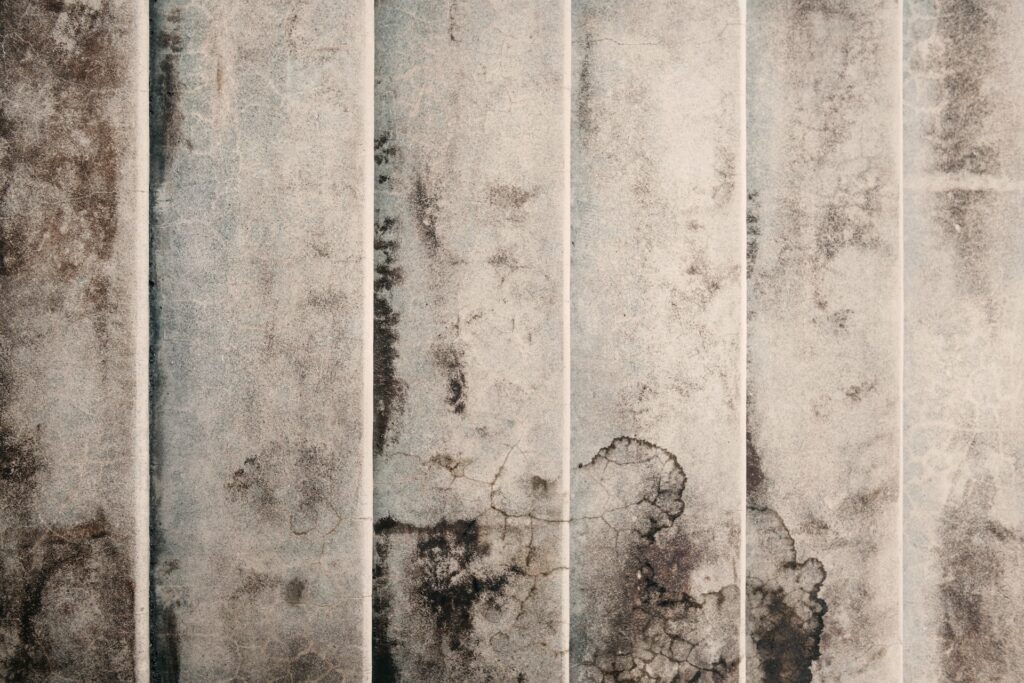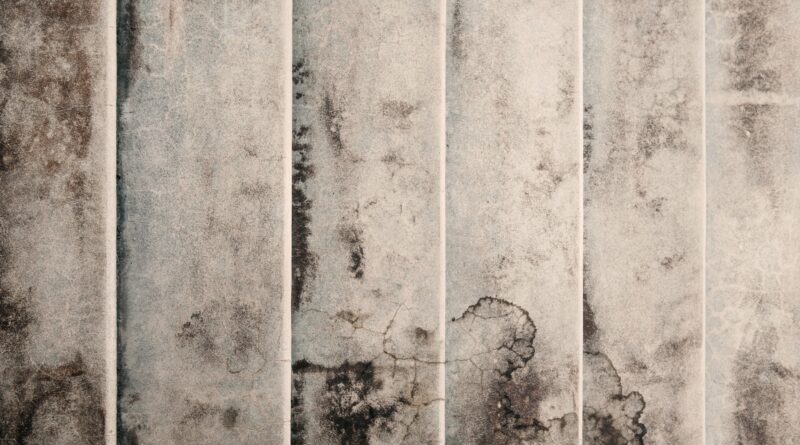DIY Attic Mold Removal and How to Prevent Its Return
JADCOM Media posts and/or links to retailers can be advertising, sponsored, or affiliate links.
We may earn a small commission from them. Thank you.
Attic mold removal for many people seems a challenging thing to deal with. However, knowing the main principles for DIY attic mold removal is necessary to have a healthier living environment. There are mold spores that may be unnoticeable but can multiply under different circumstances like water leaks, poor air circulation or excess humidity. This complete guide on DIY attic mould removal has important steps for you to remove mold from your home, and it won’t return.
Identifying the Mold Problem
Mold problems often manifest as visible mold on attic plywood, wood surfaces, or insulation. These issues are exacerbated by roof leaks and/or poor ventilation, leading to mold colonies that can pose serious health risks, including allergic reactions and respiratory problems. Recognizing the mold-affected area is the first step in addressing the problem effectively.
Extent of Affected Area
A comprehensive investigation is the basis for getting rid of the mould. After all, one can’t treat it if one doesn’t know about it. Once identified, the condition can be treated based on the extent of the problem.
Understanding Mold Spores
Small and invisible mold mounds develop as a result of mold spores in the attic. They multiply with factors such as roof leaks, lack of proper ventilation, or too much moisture present. Think of mold spores as tiny airborne invaders capable of rapid propagation in favorable conditions, reiterating the importance of vigilance.
Example: Mold spores are more like miniature seeds that can thrive only in certain situations, such as humid, poorly aerated lofts and attics.
Health Implications of Mold
Besides, mold problems go beyond structure; they can affect health. In addition, mold infestations lead to allergic reactions and respiratory problems that emphasize the importance of removal. Focus on health issues as a catalyst for fast eradication and of subsequent occurrences.
Example: Mold-related health problems work like a thief in the night that affects your being. This unknown enemy should make people realize how serious it is for one to carry out professional mould removal.
Mold Colonies and Extensive Infestations:
The presence of visible mold colonies on the attic plywood is an indication that there is an underlying problem. In case of extensive infestation, it requires an advanced method of dry ice blasting. Think of mold colonies as uninvited guests breeding and causing the need for a specific removal process.
For example, A dry ice blasting strategy is an excellent way of getting rid of mold colonies that act as never-go-away guests.
DIY Mold Removal Process
Protective Gear and Safety Measures
It is very important to have safety first during the removal process. Ensure that you have protective gloves, goggles, and a mask on your body because black mold poses serious health risks when exposed to it. Think about getting yourself ready as though you are about to undertake difficult jobs such as painting the house or working with some chemicals at home.
For example: Mold removal should begin in a similar fashion to say, a painter. A painter would not just start a project without some safety gear to protect him or her from exposure. The same prevention strategy is needed to avoid exposure to harmful mold spores and their related health dangers.
Cleaning Products and Solutions
The other important step involves using a strong but easy-to-use detergent. Make a combination of hydrogen peroxide with water, mixing them inside a spray bottle that is convenient to use. Think of that as a superhero cleaning for hard surfaces, able to beat mold.
For example: Like any other homemade environmentally safe cleaner, mixing hydrogen peroxide and water is much like a mold killer that does not rely on toxic chemicals.
Sodium Hypochlorite for Stubborn Mold
In the case where black mold becomes too hard to remove, a mixture of sodium hypochlorite and clean water works as an efficient co-worker. Be careful when applying this solution. Make sure that you cover all the areas properly without compromising safety. Consider this as powerful equipment employed on a challenging task – just like how you would use a strong detergent to scrub off your resistant stain.
With any technique mentioned here, the use of chemicals for any reason can be dangerous. Do your research, be careful, and if you feel uncomfortable about the effort, consult a professional. Specifically, look for a mold remediation specialist.
Dry Ice Blasting for Extensive Colonies
Dry Ice Blasting is an advanced technique which comes in handy in cases of widespread mold patches, especially on sheet metal. Think about how you could get rid of mold by employing microscopic dry ice pellets (snowflakes).
For example: The Dry Ice Blasting technique can be viewed as employing tiny snowflake bombs of precision-guided accuracy in a large-scale attack of mold colonies.
Undiluted White Vinegar as a Preventative Measure
Dealing with mold on wood is achieved by applying white vinegar. The white vinegar goes beyond its role as a removal agent because it acts as a preventive for future growth, thereby creating an environment that is hostile to any form of mold. Imagine this as a sort of shielding mechanism to repel possible attackers.
HEPA Vacuuming for Spore Containment
A vacuum cleaner that traps mould spores should be used with a HEPA filter to avoid circulating them during cleanup. First, it helps in clearing off all visible mould and spores that may be spreading to other places in your house. Picture it as employing a highly sophisticated vacuum with ultra-sophisticated filters that can suck out any prospective air risks.
Caution: HEPA-filtered vacuuming can be safe, but at no time should you use a regular vacuum cleaner. Without the HEPA level filtering, harmful particles are simply scattered throughout the environment, further adding to the problem.
Meticulously taking each of these steps ensures that all the mold is removed and your house becomes fortified against subsequent mould development. They can be a pre-emptive measure, to assure a safe and healthy home environment.
Undetected Mold and Preventative Measures
Mold is not always apparent to the naked eye, necessitating frequent inspections in all areas of your home. Mold is an unseen enemy until you feel the effects of it. Therefore, prevention is the best measure. Let us now discuss some preventive strategies for mold formation.
Humidity Control as a Preventative Strategy
Moisture issues are a significant source of trouble. Dehumidifiers make up the largest part of the prevention strategy, helping to reduce moisture buildup. These devices function like guards which regulate the levels of humidity that could result in excessive moisture sources that favor the growth of mold on wood sheathing, attic insulation, in crawl spaces, on floor joists, and on many types of building surfaces.
Essential Oils and Natural Defense
Incorporating the use of essential oils such as tea tree oil acts as a natural defense mechanism. These are defensive oils with antimicrobial qualities that stop mold development on food particles in the attic.
Routine Maintenance for Long-Term Prevention
If your home is proving susceptible to mold, it is important to develop a routine of using household cleaners and conducting regular maintenance. This can be the best way to approach long term prevention. Make this a simple, daily routine.
Professional Intervention and Expert Insight
In rare instances that do-it-yourself systems fail, professionals should be consulted to provide sound advice. It is similar to consulting specialists that specialize in specific diseases’ diagnosis, medication, and cure. Experts are always able to tackle particular mold problems at a higher level.

Preventing Mold Return
Proper Ventilation and Exhaust Fans
To address the primary source of mold, one must render the environment hostile to it. One of the approaches, i.e., installing exhaust fans, will play a vital role in improving air circulation as well as reducing humidity in homes and business premises.
Instead, think of the exhaust fan as being those guardians that ensure there is adequate cross ventilation in your attic as well as the elimination of the stale, humid environments ideal for breeding moulds and fungi. Careful placement of exhaust fans ensures constant air circulation with minimal pockets, which are favorable environments for mold growth.
Prompt Action on Roof Issues
Moisture management requires quickly finding and repairing leaking roofs. Therefore, water entry is crucial for the development of mould, and regular roof inspections are essential in order to intercept it at the very beginning. Think of your roof as covering you up; if you fix problems when you notice them, then it is like strengthening the covering.
As soon as you see any leak on your roof, treat it just as you would fix an umbrella that has holes. Do this before the next rainstorm to avoid water entering your attic, thereby reducing the possibility of the mold returning.
Insulation Inspection and Ventilation Problems
Checking roof insulation of the attics along with eave vents and soffit vents is what should be included in providing a dry place. Correcting ventilation problems is also one of the key measures to avoid mold appearance. Visualise these inspections, like health checkups on the health status of your attics, making them lively against mold issues.
Similarly, regular inspections can be compared with visits to a doctor that point out small problems before they can grow into significant ones.
Humidity Levels and Dehumidifiers
Dehumidifiers are also a good idea, especially in areas that have excess moisture conditions. Maintaining an environment unsuitable for mold involves reducing moisture levels. Prevent sources such as wet insulation or leaks. Picture dehumidifiers as moisture detectives tirelessly pulling excessive humidity out of the air.
Having dehumidifiers in your attic is like deploying a whole army of moisture-absorbing sentinels that make it a difficult atmosphere for a mold to live in.
Essential Oils and Organic Matter
The use of tea tree oil, one of the most commonly utilized antimicrobial agents, proves beneficial in this regard. Essentially, they play a guarding role by blocking mold that seek to attack organic materials in the attic. Consider them the strongest bulwark that guarantees safety for your attic from possible mould invasion.
Household Cleaners and Routine Maintenance:
Regular use of household cleaners at home helps to avoid any probable risks associated with mold infection. This ensures that people develop a habit of conducting routine maintenance of surfaces to ensure mold-free environments and minimize health concerns. Treat attic maintenance just like your daily hygiene rituals for a healthy and strong body.
Cleaning regularly is just like brushing your teeth every day. It helps you avoid having accumulated problems in your attic that might be harmful to you.
Professional Help and Mold Remediation Specialists
When the DIY techniques fail, it is important to seek the professional services of a mold remediation specialist. It helps in ensuring that their expertise is used for assessing the mold and eliminating it for good. Think of these professionals as your attic’s qualified doctors armed with mold medicines and antidotes.
Take a Healthy Stance Against Mold
Taking a proactive stance against attic mold is not just about elimination; it’s about creating an environment that resists its return. Detailed DIY mould removal processes and preventive measures should be followed carefully to protect your home from dangerous human health consequences.
Take care of your family by regular inspections toward leaks and proper ventilation to create mold-free attics and better living conditions. Do not forget that buying a tidy garage is buying health for tomorrow for your house and family is necessary.
Addressing mold can be done as a DIY project, but with great care. If the job is too much for you, the best approach might be to hire a mold removal company.

